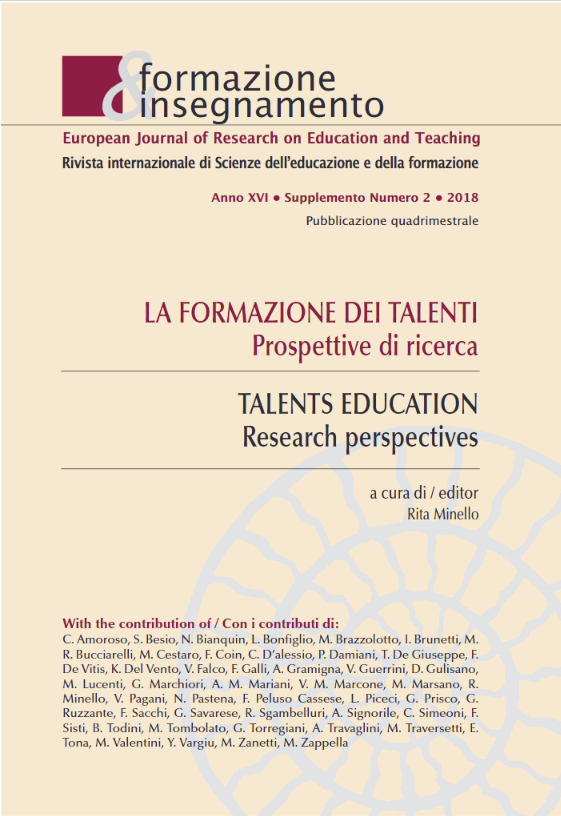Embodied Letter. Case Study
Abstract
Starting from the assumption that reading is not a gift but relationship that
established between the self and the sign, we approach the subject of literacy
as a means of partecipation, inclusion and equity in today’s society by
considering the attitude with which a child, in the first two years of the primary
school, approches learning of the letter, defined as embodied (Del
Vento, 2017). This attitude can be considered a mother energy (Fagiani, Sri
Rohininandana Das, 2007), already alive in the individual at birth and delivered
from the relationship between the vitality of the father and the mother.
The concept of source force has remote origins, it is already present in archaic
cultures. It is the task of the 21st century school to create conditions
that, through corpereity, dynamic and holistic work setting, allows internal
vigors to emerge externally. The static classroom becomes, by means of
rhythmic layout of the desks programmed and anchored by the teacher to
positive sensations, a valorizing and socializing context both for the individual
and for the group. It is the movement of the body, combined with a constructed
and shared mental rhythm, that facilitates learning. Teacher and
students are “en motive” (Del Vento, 2017).
Downloads
Published
How to Cite
Issue
Section
License
Copyright (c) 2018 Katia Del Vento

This work is licensed under a Creative Commons Attribution 4.0 International License.
Formazione & insegnamento is distributed under Attribution 4.0 International (CC BY 4.0).
For further details, please refer to our Repository & Archiving Policy, as well as our Copyright & Licensing Terms.





